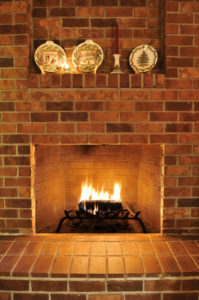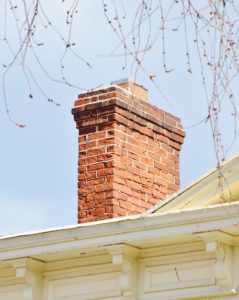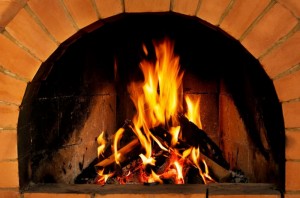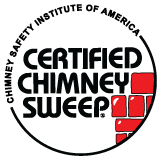Is My Chimney Safe?
You’ve maybe heard your neighbors ask it of their homes while looking up at the roof or lighting the fireplace. It’s the most common question homeowners ask chimney sweeps, and you’ve maybe asked it yourself. The reason homeowners ask is that the chimney is one of the biggest systems in your home and can be the most dangerous.
 Is ANY Chimney Safe?
Is ANY Chimney Safe?
The question is, can any chimney be 100 percent safe? Even chimneys that are well-constructed used properly, and maintained regularly are not guaranteed to be problem-free. The fact is that while your chimney will never be 100 percent safe, there are ways to ensure it’s the safest it can possibly be.
Regular Maintenance and Chimney Safety
According to the National Fire Protection Association (NFPA) and the Chimney Safety Institute of America (CSIA), regular maintenance is exactly what makes the safest and most efficient chimney systems. Safe chimneys are efficient ones and efficient chimneys are safe. This means that the most important thing you can do for your chimney and your home is to have it regularly swept, inspected, and properly maintained.
During your chimney sweep, a technician will clean your chimney system of any soot, creosote, ash, and debris, protecting your home all the while. We come in and cover flooring and furniture with drop cloths and use an industrial vacuuming system to keep the whole service mess-free and stress-free. Once complete, you can rest assured that your flue is obstruction-free and no hazards exist.
During a standard chimney inspection a certified technician will assess the whole system from top to bottom, inside and out. There are three levels of inspection based on your own needs. If your chimney has been functioning properly and used in the same fashion with no changes or problems, you need a level one inspection each year. If the chimney has had a problem, repair, or gone through a serious storm or fire, it requires a level two inspection which is slightly more thorough and includes a video scan of the flue interior. This inspection is also required before the sale or transfer of property. When a hazard is detected during a level one or two inspection, your technician will recommend a level three inspection. This inspection may require minor demolition and usually results in a chimney repair.
Chimney Damage and Safety
Another risk factor that brings down the safety or efficiency of your chimney is definitely chimney damage. Once a problem is noticed by the homeowner or reported by the technician, it should be repaired as soon as possible. A damaged chimney is not a safe one, whether it’s simply missing a part of the masonry is spalling. If any part of the vast system is out of order, damaged, or missing, the efficiency of the whole system goes down and risk goes up. The only way to have the safest chimney possible is to schedule routine services like sweeps and inspections and then follow the recommendations of the professionals whom you trust with your home and chimney. Money spent repairing a dangerous chimney is money invested in your home. No chimney sweep from Chief Chimney Services will schedule service without first consulting the homeowner. We won’t even schedule a level three inspection without giving you good reason and getting your permission to move forward. We will offer you a report which often includes photographs to back up our recommendations. If you want a second opinion, we understand, but we stand by our technicians and their recommendations 100 percent. If you get a second opinion elsewhere and want to continue services and repairs with us, that is great too! We welcome the business and appreciate the thoroughness of a responsible homeowner.
Spring Cleaning and Chimney Safety
If you haven’t scheduled important maintenance for your chimney system in the last twelve months, now is the time. As part of your spring cleaning routine, while you’re focusing on cleaning the gutters and decluttering the closets, take a look at your masonry. Schedule a chimney sweep or inspection to close out the winter. Use some of your tax refund to make necessary repairs before the rainy season. Invest in your home during this time to ensure you’re doing all you can to maintain the value of your property, but also keeping your home safer and more efficient than ever.
Chimney Maintenance and Repairs in Suffolk County
Residents in Suffolk County need to look no further than Chief Chimney Services for all their comprehensive chimney services. Our priority is safety and comfort for our customers, friends, and neighbors. That means, we strive to offer the best services in the area, completed by the most qualified experts.
Can you ever be sure that your chimney is 100 percent safe? No. But we at Chief Chimney Services will make certain that it’s the safest and most efficient as it can possibly be this winter and through future winters.
Call Chief Chimney Services at 631-863-2460 or schedule online today.









